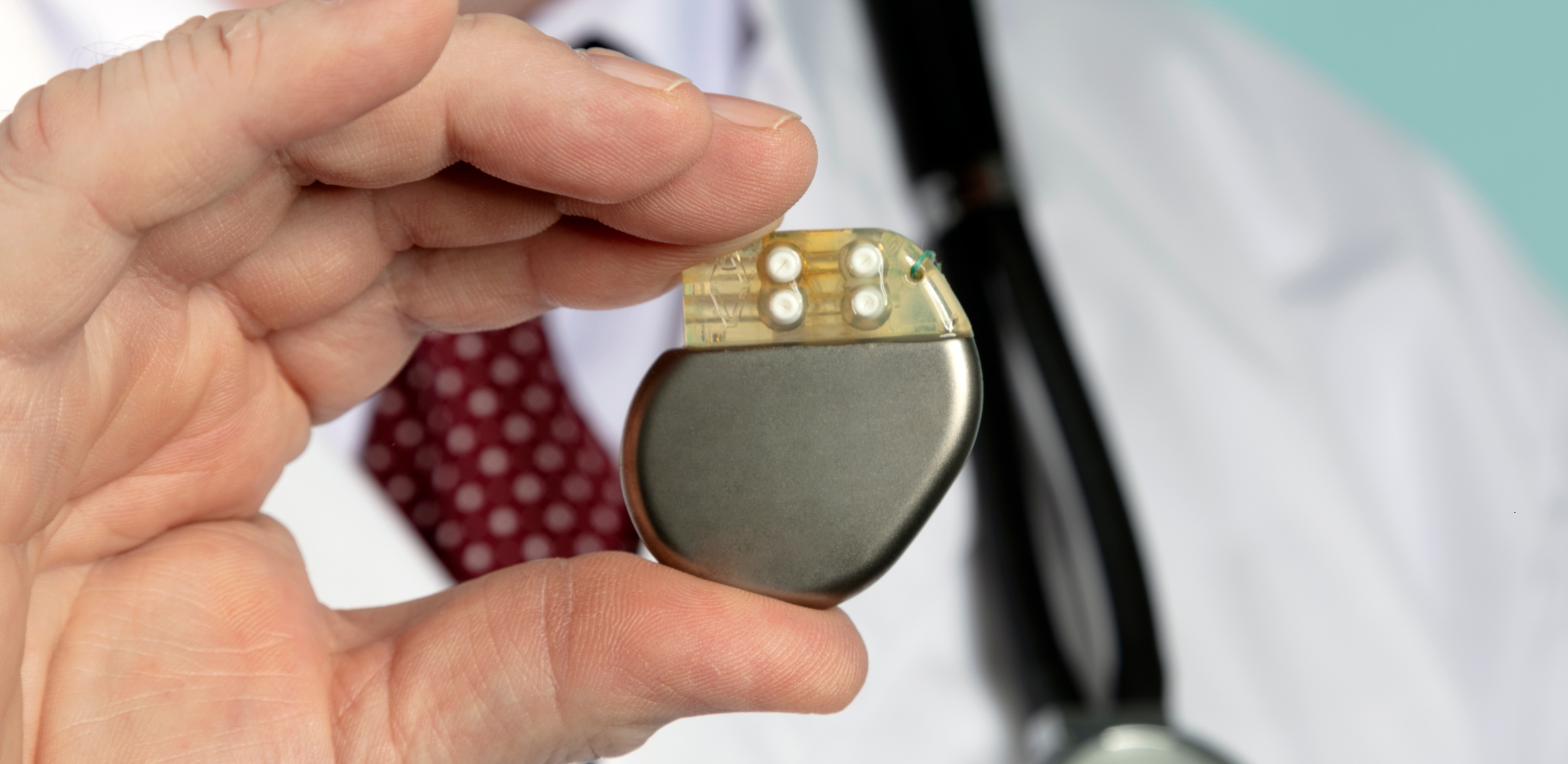- TAVI
- Tri-Klip
- Complex Coronary Interventions
- CTO Treatment (Chronic Total Occlusion)
- Balon Mitral Valvuloplasti
- Pulmonary Balloon Valvuloplasty
- Septal Ablation
- ASD (Atrial Septal Defect)
- Coronary Arteriovenous Fistula Closure
- Paravalvular Leak Closure
- Ablation Methods for Tachycardias
- Supraventricular Tachycardias
- Atrial Fibrillation
- Epikardial Ablation
- Stereotactic Radiosurgery
- Lead Extraction
- Device Implantations
- Pacemaker / ICD
- CRT / CRT-D Implantation
- Wireless Pacemakers
- Renal Denervation
- Non-Surgical Treatment of Aortic Aneurysms and Ballooning
- Cardioneural Modulation

Pacemaker / ICD
Pacemaker and Implantable Cardioverter-Defibrillator (ICD) devices are implantable devices used to treat cardiac rhythm disorders.
Pacemaker / ICD
Pacemaker and Implantable Cardioverter-Defibrillator (ICD) devices are implantable devices used to treat cardiac rhythm disorders. Both devices monitor the heart’s electrical activity and intervene as needed, but they target different issues and operate differently.
Pacemaker
Function A pacemaker sends electrical impulses to regulate heartbeats. It is typically used to treat conditions such as bradycardia (slow heart rate) or heart block. The pacemaker monitors the heart rhythm and sends electrical pulses when necessary to maintain the heartbeat at a normal level.
Types
- Single Chamber Pacemaker: Typically places a lead in only one heart chamber (right atrium or right ventricle).
- Dual Chamber Pacemaker: Places leads in both the right atrium and right ventricle, ensuring synchronized activity between the atrium and ventricle.
- Biventricular Pacemaker (CRT-P): Used in patients with heart failure to synchronize the left and right ventricles, thereby improving pumping efficiency.
Implantation Procedure
- Preparation: Patient evaluation and identification of the implantation site.
- Anesthesia: Generally local anesthesia is applied.
- Device Placement: A small incision is made to create a pacemaker pocket. Leads are inserted into appropriate heart chambers, and the device is placed in the pocket.
- Testing: Tests are conducted to ensure proper functioning of the leads and device.
- Closure: The incision is closed, and the patient is monitored post-procedure.
Risks
- Infection
- Bleeding or hematoma
- Lead displacement
- Device malfunction
Implantable Cardioverter-Defibrillator (ICD)
Function An ICD detects and corrects life-threatening rapid heart rhythms (ventricular tachycardia and ventricular fibrillation). It delivers an electric shock to restore normal rhythm when needed. While ICDs can also function as pacemakers, their primary purpose is to reduce the risk of sudden cardiac arrest.
Types
- Transvenous ICD: Leads are placed through veins into the heart, and the device is placed under the skin in the chest area.
- Subcutaneous ICD: Leads are placed under the skin without entering the heart. This method is used when intravascular lead placement is not feasible or suitable.
Implantation Procedure
- Preparation: Patient evaluation and selection of the appropriate device.
- Anesthesia: Generally local anesthesia or mild sedation is used.
- Device Placement: The ICD is placed in a pocket created in the chest area. Leads are inserted into heart chambers and connected to the device.
- Testing and Programming: The device is tested and programmed to ensure proper function.
- Closure: The incision is closed, and the patient is monitored post-procedure.
Risks
- Infection
- Bleeding or hematoma
- Lead displacement
- Device malfunction
- Risk of delivering inappropriate shocks
Conclusion
Pacemaker and ICD devices are critical technologies for treating cardiac rhythm disorders. Both devices are used to improve quality of life and extend the lives of cardiac patients. The implantation procedure and post-care are crucial for the long-term success of these devices. Pacemaker and ICD implantations represent significant advancements in modern cardiology and have greatly improved the management of cardiac rhythm disorders.
